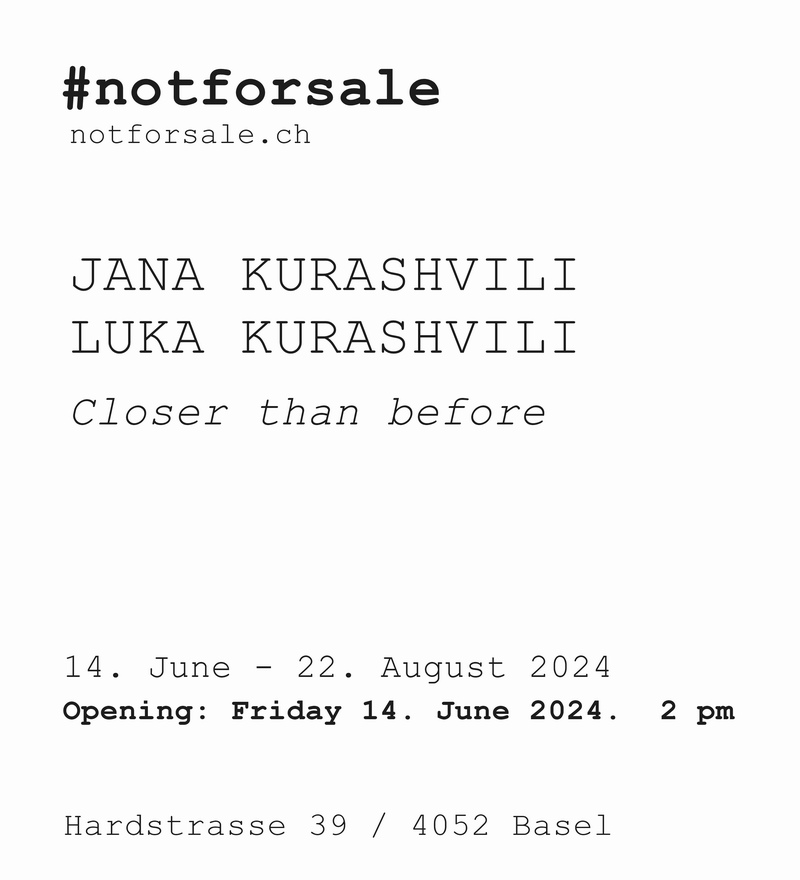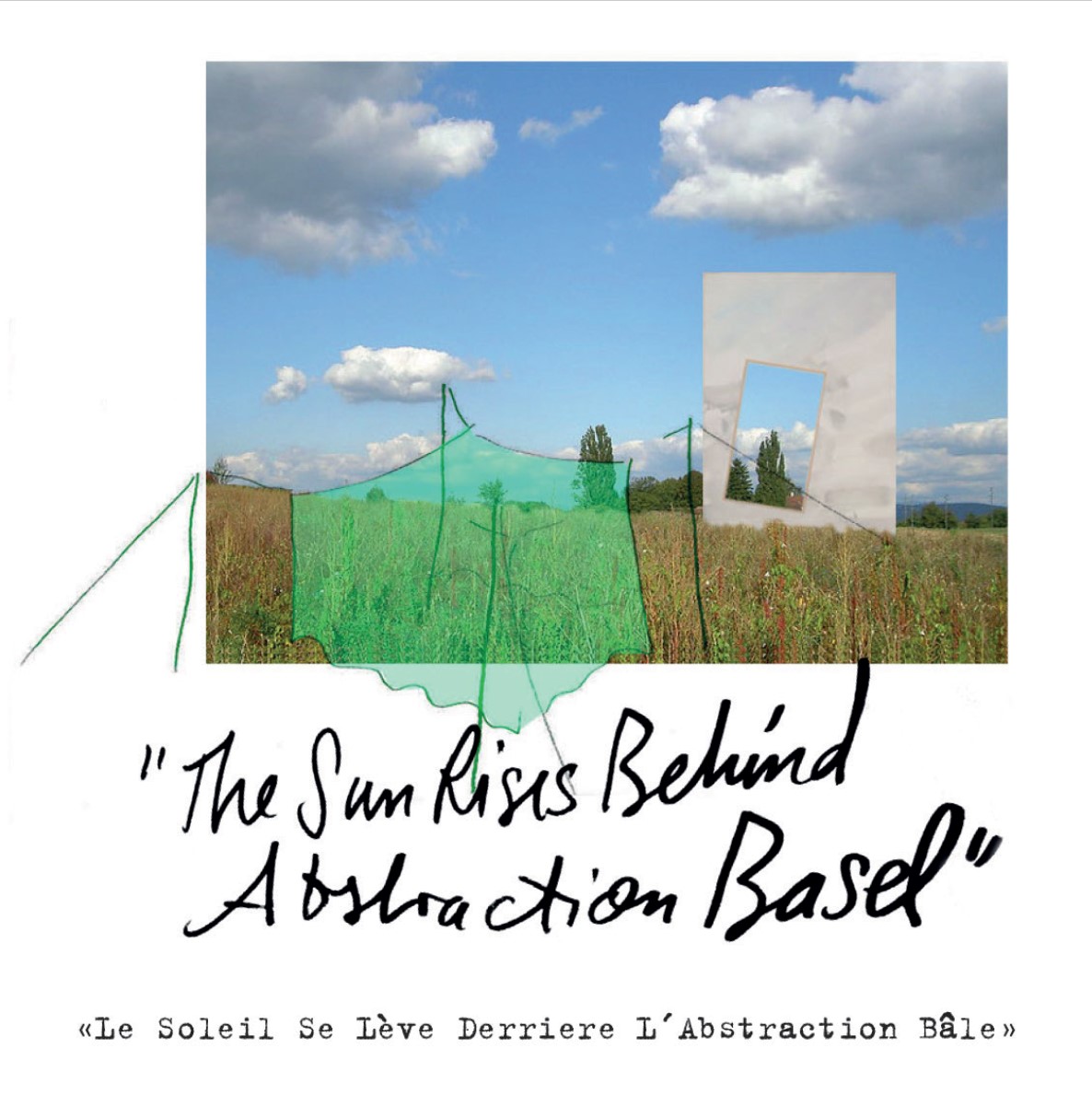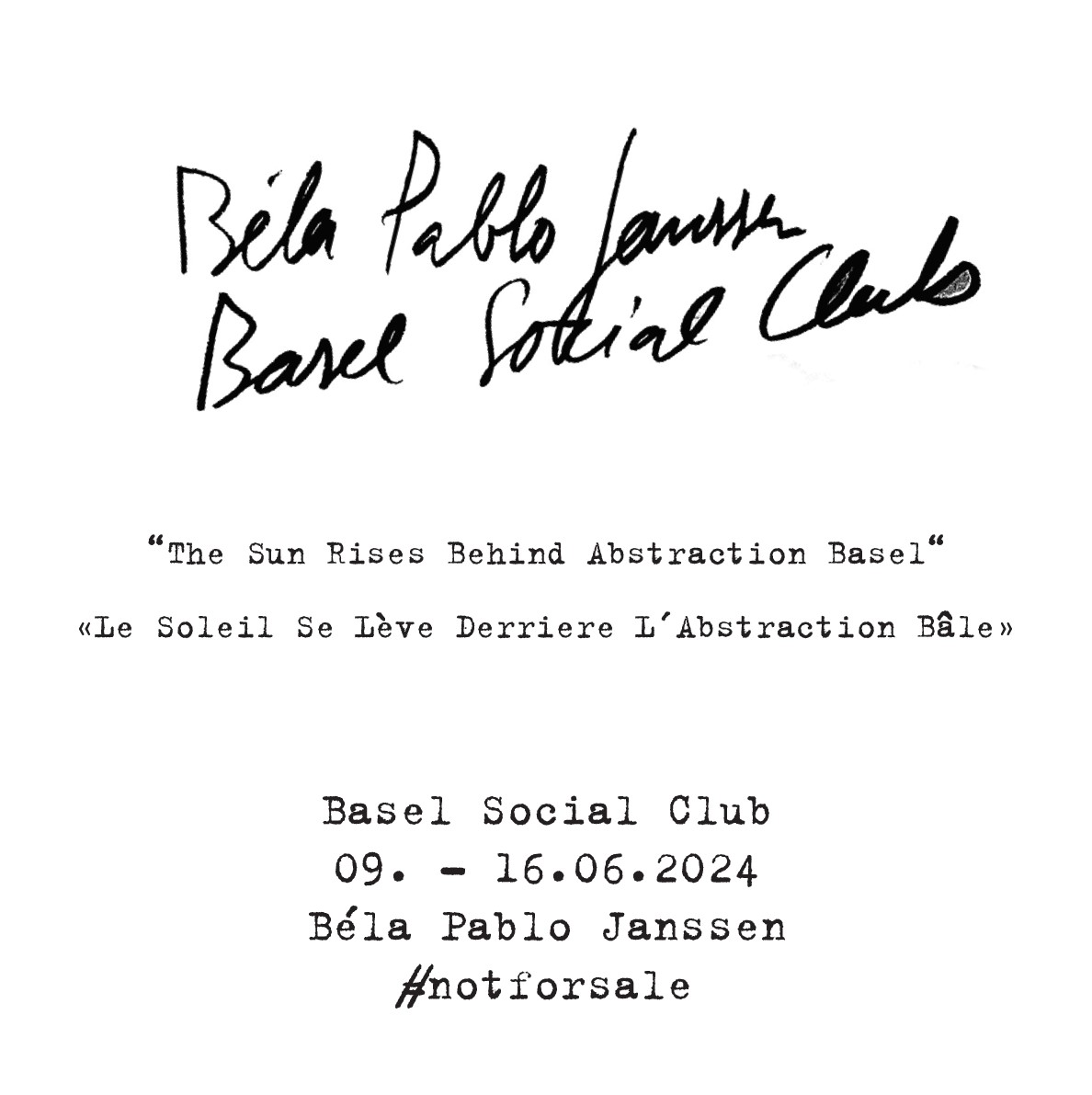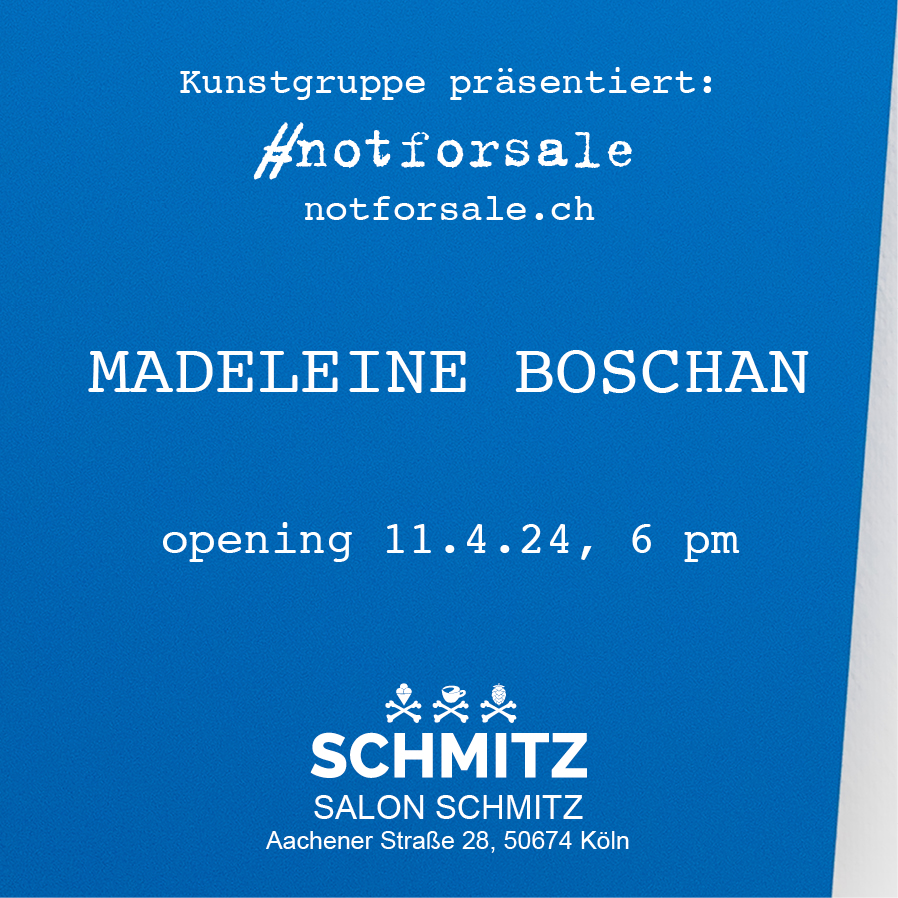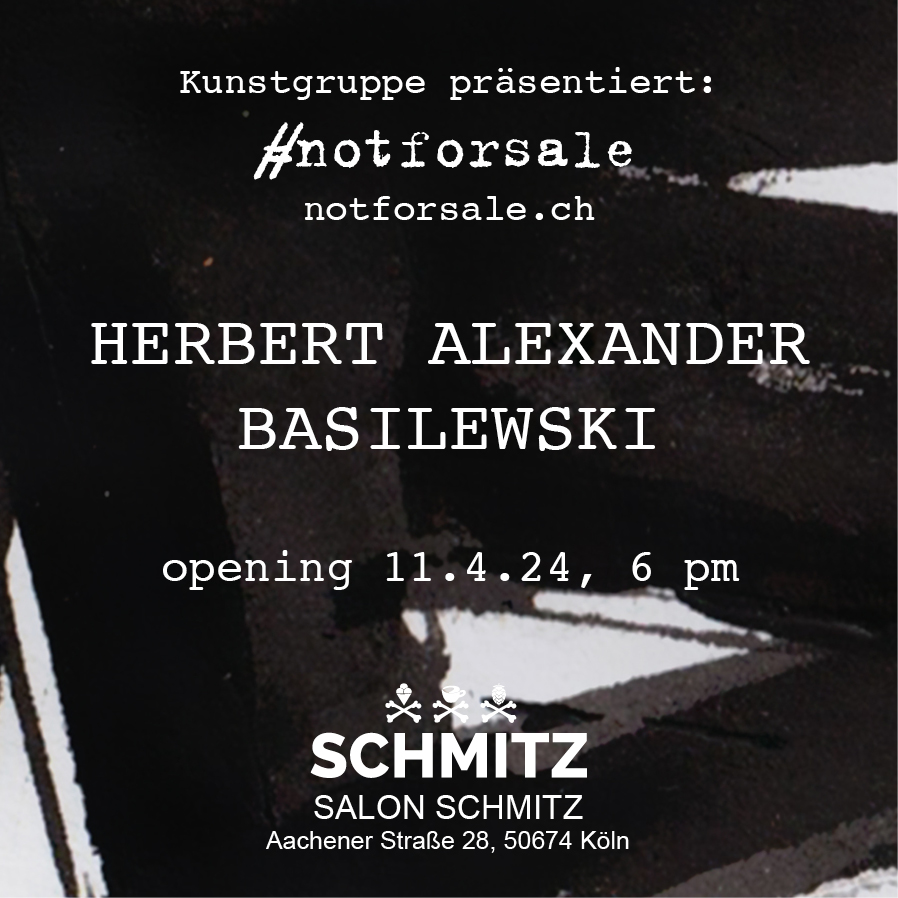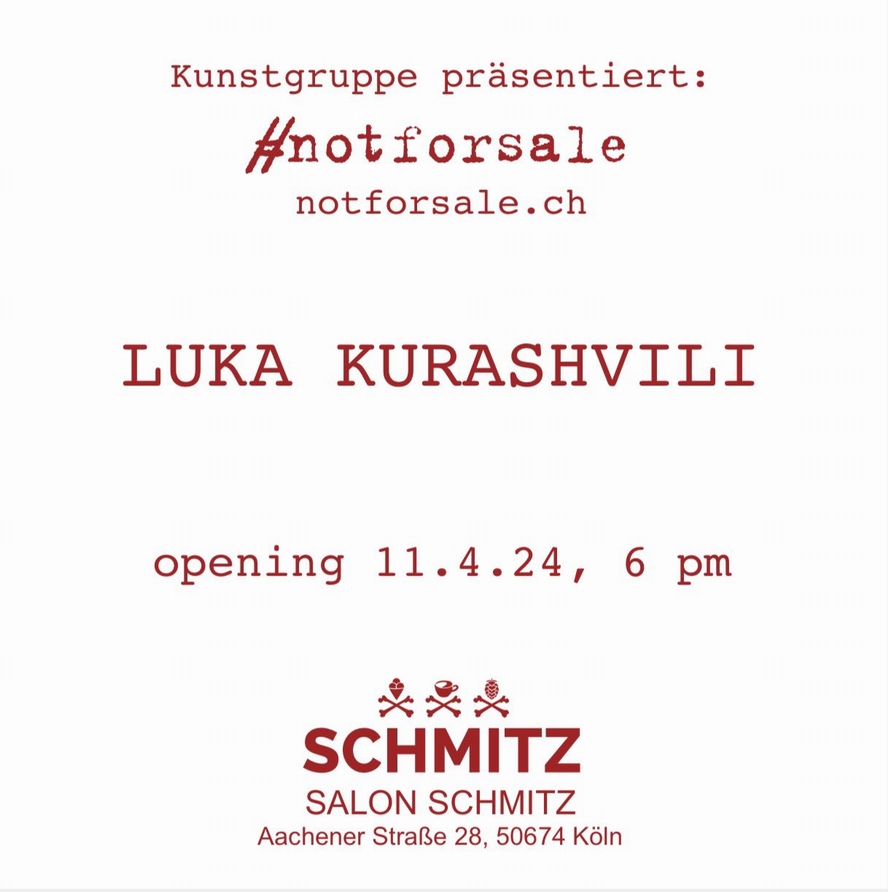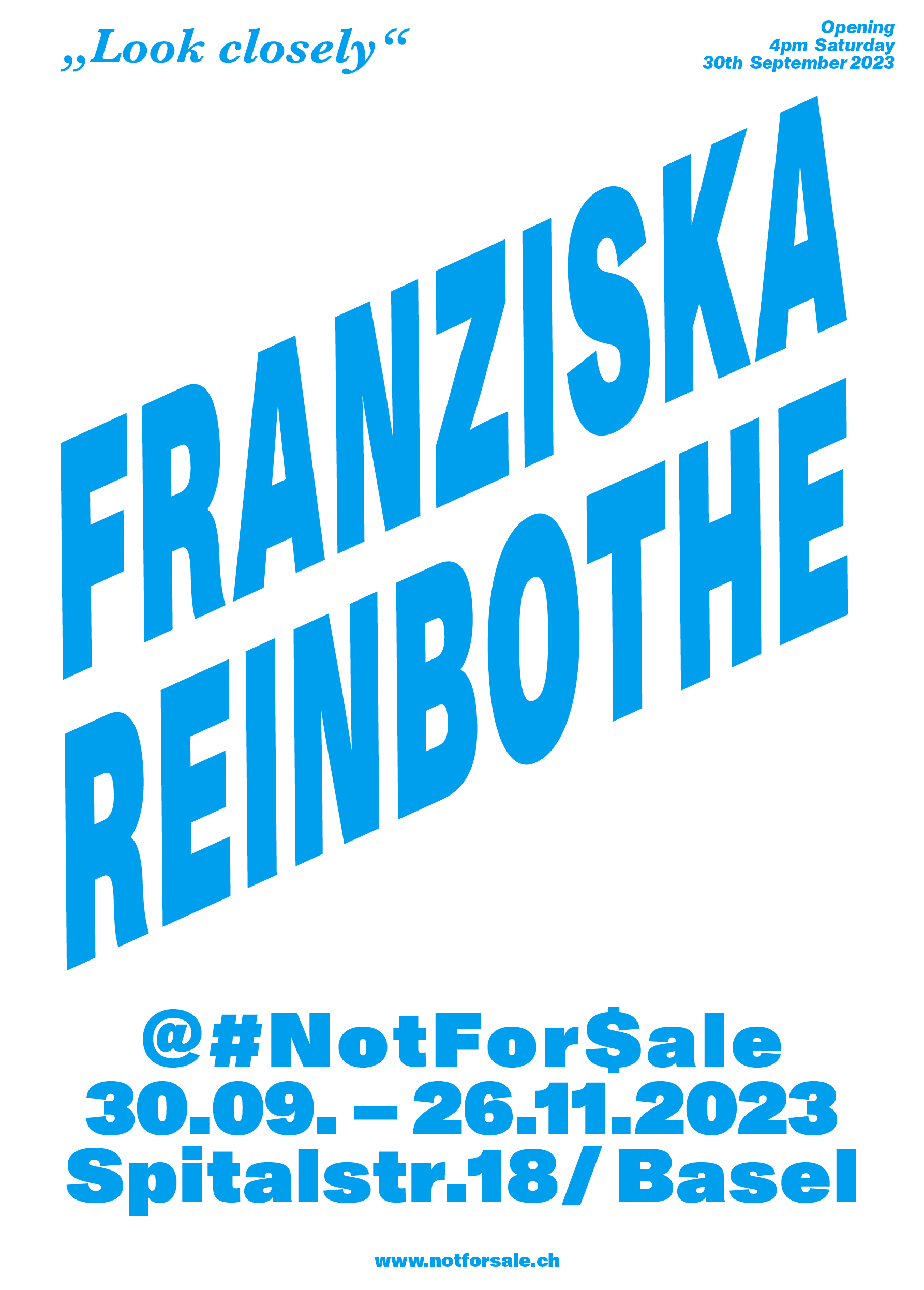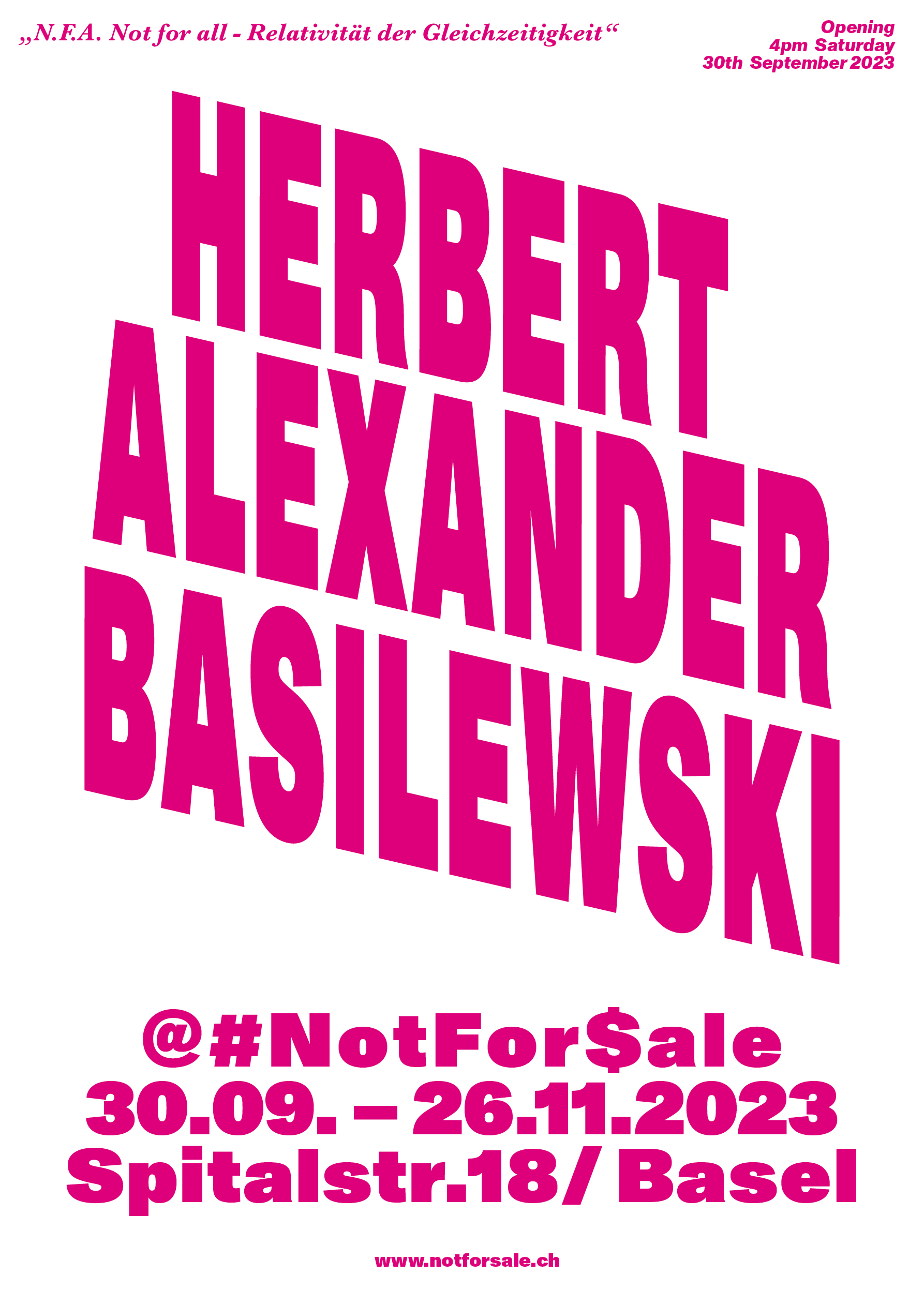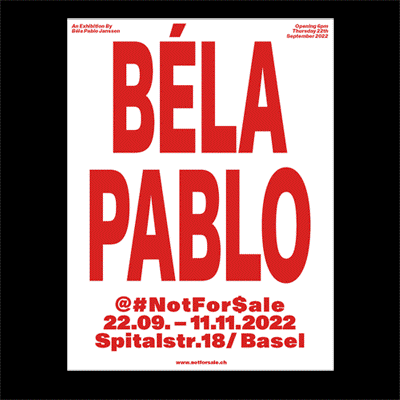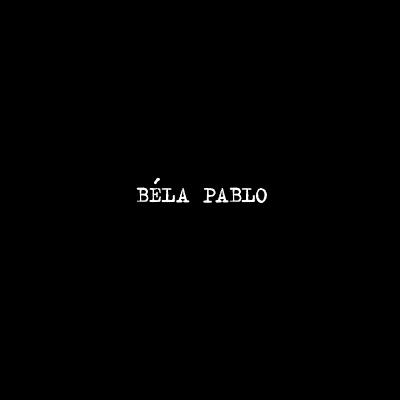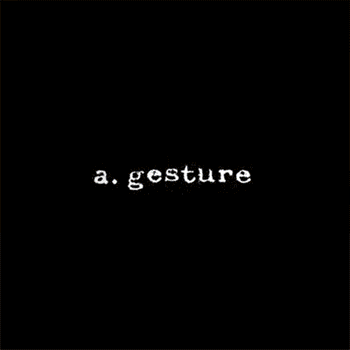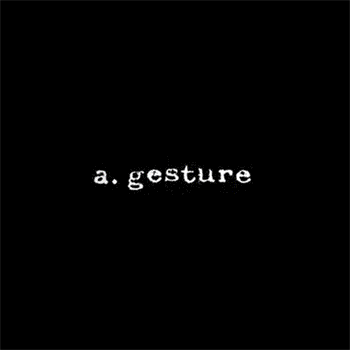|
"The Sun Rises Behind Abstraction Basel" - Béla Pablo Janssen
9-16 June 2024. 2pm at Basel Social Club
|
|
|
|
The sunrises that Béla Pablo Janssen sketches en plein air, again and again, are perhaps less a motif and more a ritualized form of watching, the processing and transference of an extended period of time through washes of colour.
In their blown-up form they perform another transference: on canvas, they are marks of this extension of time, albeit more or less abstract—shorthand for the ritual of the exercise.
They contemplate both historical and personal notions of what exactly an artist is, or does.
Since the 1960s, questioning the rules that determine the inside and the outside of art has become a central concern of art itself, with the underlying understanding that the rules - the frames themselves - are fluid and, moreover, dimensions in themselves. As much as these paintings form a contemplation of the materials, forms and textures they display, they also exhibit the frame and processes of framing as the primary method of art making itself.
Jenny Dirksen, 2014
|
| |
We are excited about our very first exhibition in Cologne this week!
Please join us for the grand opening at legendary Salon Schmitz.
Thursday April 11, 2024, from 6pm.
|
|
|
|
With German sculptor Madeleine Boschan and German painter Herbert Alexander Basilewski #notforsale presents two artistic positions that focus on the essential aspects of space. Their work will be on display for the first time as a collaborative show on the ground floor of the lounge.
Same time the solo presentation of Georgian painter Luka Kurashvili is opening on the first floor @ Belle Etage of Salon Schmitz.
|
| |
"N.F.A. Not For All - Relativität der Gleichzeitigkeit" - Herbert Alexander Basilewski
Opening 4pm, Saturday, 30th September, 2023
|
!['N.F.A. Not For All - Relativität' by Herbert Alexander Basilewski - Poster]()
|
| read text view exhibition in PDF |
|
| |
"The future has an orange background" - Curated by Georg Elben
Opening 7pm, Monday, 12th June, 2023
|
|
The future has an orange background
What makes visiting an exhibition in a private setting a lasting experience? It is your own curiosity, because it is always exciting to see how far the expectations and the experience match.
The crooked cellar to the fantastic roof terrace, an associative selection of works of art over four floors at Spitalstrasse 18 becomes an adventure that transcends the boundaries of time and art history: It feels like a visit to the house of a large extended family. The juxtaposition of artistic themes and attitudes is surprising, entertaining, sometimes decorative, and even the greatest experts cannot directly classify all works.
view exhibition in PDF
|
|
| |
An exhibition by Luka Kurashvili - "No strangers beyond the pictures."
Opening 4pm, Saturday, 6th May, 2023
|
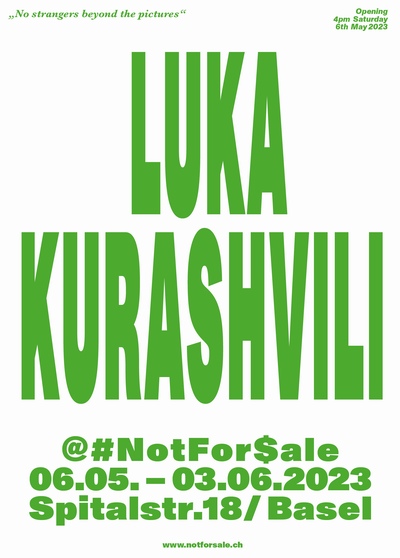
|
|
No strangers beyond the pictures
The painterly work of Luka Kurashvili (*1985 in Tbilisi) emerges from the dynamic interplay of close observation and fleeting vision. The haunting quality of his paintings derives from contrasting painterly states that unfold in the spectrum between proximity to reality and emotionally driven expression. A fundamental artistic tension between control and freedom becomes immediately tangible when viewing the predominantly large-format canvas works.
In them, a figurativeness prevails that Kurashvili had fixed in fleeting sketches or watercolor drawings on paper beforehand. The motifs stem from casual, everyday observations of banal actions and gatherings of people. The preliminary drawing becomes evident in strong contours, often reinforced with charcoal, with which the former master student of Peter Doig anchors the figure in the pictorial ground.
Kurashvili finds his protagonists in his close environment; they are friends, relatives, fellow artists. Starting from his own photographic templates, on which he captures certain constellations of figures, as well as postures and poses, he selects his pictorial personnel as in a casting and then brings together individual figures in the way of a collage to form the pictorial composition. In his painterly staging of everyday situations, Kurashvili, son of a cameraman, adopts the processuality of film shooting and the freedom of decision of the director, who can spontaneously make a figure disappear from the scene.
Similarly, Kurashvili seeks to allow the randomness of the painterly process to expand scopes of action and explore possibilities of bypassing narrow figurative and narrative constraints. In particular, the dissolution of figurative pictorial areas into pure gestures of painting proves to be an act of artistic liberation.
Sometimes Kurashvili even pours a bucket of paint over a canvas that has already been painted in order to liquefy and transform what already exists, what seems unalterably fixed. In such impulsive actions of painterly improvisation, which sometimes take their cue from masters such as Edvard Munch or Henri Matisse, paint is engaged in its very materiality. Paint swirls out in whirlpools or runs in rivulets across the picture surface.
With the organic flow of colors that, as it were, dissolve under his fingers, Kurashvili intentionally allows himself to be driven by unguided processes of the subconscious. The painter, just as he claims a freedom of decision for himself, concedes a certain degree of independence to the act of painting itself. Kurashvili acknowledges the possibilities painting reveals. By means of overcoming the laws of perspective or narrative congruence, surprise effects allow for unforeseen reactions, bringing forth dream images and shedding light on unknown mental realms. In opening up an experimental level of painterly indeterminacy, the relationship between figure and ground in Kurahvili´s settings often remains ambiguous.
Kurashvili‘s paintings, which always oscillate between a reality-based illusionism and pure imagination, reflect a powerful painterly concern that does not simply disintegrate the planes of the pictorial space in abstract reduction. Instead, issues regarding compositional structures and the organization of the pictorial plane become the subject of a complex artistic interrogation by means of figurative elaboration.
Luka Kurashvili's exhibition is titled "No strangers beyond the pictures". As the name of the exhibition suggests, the protagonists in Kurashvilis latest works are not about fictitious strangers, more about friends and people from the immediate environment of the artist, which he associates with the places and surroundings of his everyday life.
As example there are bar and nightclub scenes such as in "Yellow bar" and "Girl in the nightclub" surroundings that Kurashvili lives in and paints them in his oeuvre. The painting "Rheinpark", which is the place he spends countless time over the last 15 years in his hometown Düsseldorf, poses Kurashvili a large number of people he knows there, spending their free time on a hot summer day. But he also reveals insights into his intimate life as an artist such as in "Before the show". The artist paints himself together with an employee from the bar next door pouring a glass of wine upon his arrival for the installation of the show.
Behind Luka Kurashvili's current pictures there are no deeper statements or social statements. Rather, they are value-free snapshots and intimate insights into his own life as a person and as an artist and all of them together it represents a storytelling like in a storybook.
|
|
| |
an exhibition by Jana Kurashvili - Symptome
opening 4pm, saturday 11th february 2023
|
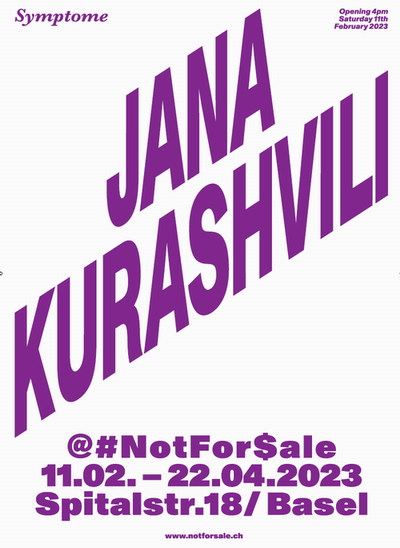
|
|
Of masks and mouths – the monstrously human in the work of Jana Kurashvili
With an apathetic expression and a chalky white face, the figure looks straight out of the painting and directly at the viewer – although the glassy eyes, slightly detached from the axis of vision, barely seem to focus, instead glowing malevolently white like those of a zombie. The mouth with the bared teeth is contorted into a demonic grimace, which in turn recalls the characteristic feature of Joker. Altogether, the figure doesn't seem to be from this world, despite the prim and proper lace collar it wears and the mundane bottle tightly gripped in its right hand. A few dark shadows are scantily silhouetted in the background, their outlines blurred and indefinite. Does the bottle appear as a significant attribute revealing the isolated protagonist in the foreground to be an alcoholic, disengaged from his surroundings? In consequence, is one led to believe that his perception is impaired, so he sees everything blurred and double? The eerie, yet ambiguous aura, oscillating between the melancholic, manic or monstrous, of the figure dissolves the boundary between outer and inner reality, between pose and pathological condition. Through the distorted facial expressions it displays, the sad clown seems to embody inner turmoil and vulnerability.
While viewing the painting, the logic of the pictorial scene, that is, the rationally comprehensible coherence of narrative components, disintegrates. What at first appears to be an actual social gathering, a group of party people in a dim atmosphere, dissolves in the face of the protagonist's intense afflicted gaze: the fleeting background figures are now perceived as ghosts, the spectres of a tormented soul...
The most recent paintings by Jana Kurashvili (*1995) are populated by grotesque and ghostly figures, which, however, in a realm beyond horror cabinets or freak shows, expressively depict the many facets of an individual. The masquerade is thus a central motif of her brightly colored paintings. Exaggerated artificiality and gaudy, intentionally bold color schemes are a straightforward means with which she illustrates the incongruence between shrill semblance and silent self. The staged appearance of Kurashvili´s protagonists represents the often painful discrepancy between true state of mind and feigned grimace.
Starting from the range of own feelings, often bordering on gloominess and depression, the artist traces the darker sides of her personality and converts manifold emotions into a cast of characters. The protagonists of her works therefore appear as personifications of psychological states. They often stand beside themselves – literally and figuratively. Eccentric, destabilized, Janus-faced, marked by physiognomic fragmentation, they display symptoms that point to disturbances in their mental balance. The paintings (the titles of explicitly identifies them as "symptoms") can be understood as images of multiple manifestations of the self, as sometimes nonconformist, even abnormal "versions" of identity.
Although her subjects and stories are never premeditated and she completes a painting in a single working session lasting between three and four hours, Kurashvili´s artistic process does not prove to be a mere intuitive, physical outburst like in Abstract Expressionism. While Kurashivili passionately follows the feeling that triggers her painterly impulse, she does not seek spontaneous discharge in a quick explosive act. Rather, she engages in the pursuit of the feeling, seeking to intensely work out its (psychological and pictorial) quality and capture its essence, making it tangible by giving it a concrete form. Since her paintings are based on a concentrated search for identification rather than a wild gesture, her figures emerge as an outward projection resulting from an introspective approach. Kurashvili thus transforms vague fears and obscure nightmares into a clear visual language so that her protagonists become partners in a highly personal dialogue.
In her exploration of moods and motifs, the artist does not shy away from confronting her own feelings or engaging with the emotions of the viewer. She captures what moves her in a direct, unflinching manner – but with a sense for the absurdity of existence. Relentlessly and with a mischievous grin, she directs our gaze to an open mouth, huge and red, like a gaping, bloody wound. The swollen lips gleam obscenely in the waxen face, whose delicate pastel tones seem almost colorless in contrast. In the light pink of the incarnate, the eyes are wide open, pale blue and dull. Against this bloodless background, one perceives the sore area as an attack on one's own bodily integrity, to which one is defenselessly exposed. As if a visually transmittable disease or danger could emanate from it, the eye involuntarily turns away. It is a purposefully shocking self-portrait, with the artist looking at herself in the mirror of her feelings. In contrast to this existential motif of the stifled cry, Kurashvili's faint reflection in the smooth surface of an oven door disclosing a roast chicken broiling inside is imbued with a starkly self-ironical flavor.
The clear arrangement of pictorial elements creates clearly balanced compositions like choreographed scenes on a stage. In the context of the exhibition Kurashvili´s subjective pictorial personnel is paired with papier-mâché figures, with which the impressions and effects already laid out in the paintings are further enhanced and humorously commented. In the conscious staging of her inner life, the artistic work of Jana Kurashvili becomes an act of self-empowerment, a statement of (self-)control. As the spectrum of symptoms unfolds in the depicted scenes and characters, the event of painting is closely linked to the process of selfreflection. Kurashvili describes her individual emotional world while referring to a general human condition of universal validity. Her panopticon reflects the facets of the self - and the inevitably corresponding empty façades of multiple role-plays between tragedy and comedy.
(Bettina Haiss, Cologne 2023)
|
|
| |
an exhibition by Jan Kiefer - Graustufen
opening 6pm, saturday 11th february 2023
|
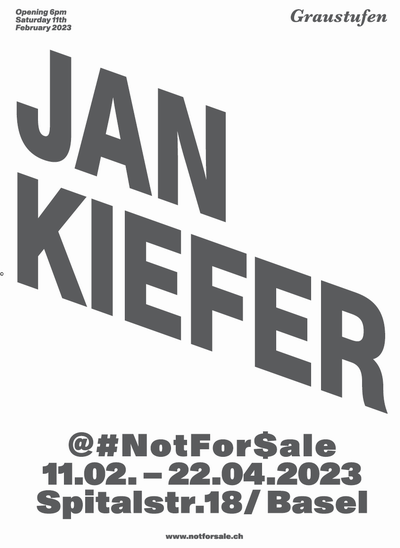
|
|
Jan Kiefer - Graustufen
Symbols and words are empty forms filled with stories. For them to establish themselves in our collective knowledge, they must develop their effect through repetition. For example the cross, originally a sacrificial tool, was repeatedly represented and thus became the symbol for a belief system that has prevailed over the last two millennia.
Jan Kiefer makes a point about how we still feed the narrative around ancient power structures.
As an atheist, JK wants his works to remind the viewer that truth, as taught by major institutions since they exist, is more than teachable. Truth implies the various aspects of human subjectivity, and ends up contradicting itself.
In the past, humanity has experienced its worst mistakes in mass movements with simplified ideals and naive attempts at solutions. The will to the "absolute good" is onesided, limiting and dangerous.
In a missionary way, globalization and the internet suggest to us the illusion of a unity in which everything is interconnected and thus everyone is the same. This collective naivety in favor of a blind faith in the human being makes what distinguishes us and what makes the other interesting or mysterious fade away.
The word discrimination comes etymologically from the act of observing and distinguishing with discernment. The perception of nuances and differences enables us to evaluate in detail the enriching or destructive effects of things through comparison and confrontation.
In recent decades, the culture of discussion has deteriorated and criticism is usually expressed only cautiously. Opinions are either diffuse or extreme, anything can be likable, is evaluated equally, and thus prevents differentiation. The artist's saying „everyone loves everything" points to this dull, comfortable homogeneity. These times of relief turn into a vulnerable indifference, similar to that of a drunk.
The artist draws from the history of (re)production of images, so that his paintings refer directly to the things we all know, without artifice, to refresh their absurd anachronism in our perception. For example, the two works from a new series (Animals - Then and Now, 2023) present animals as symbols of man's excessive abuse of power. From mammoth to dog, exterminated to over-objectified, until the excess of it uncontrollably overwhelms the capacity of our earth.
Mellissa Absarah Torres
|
|
| |
| |
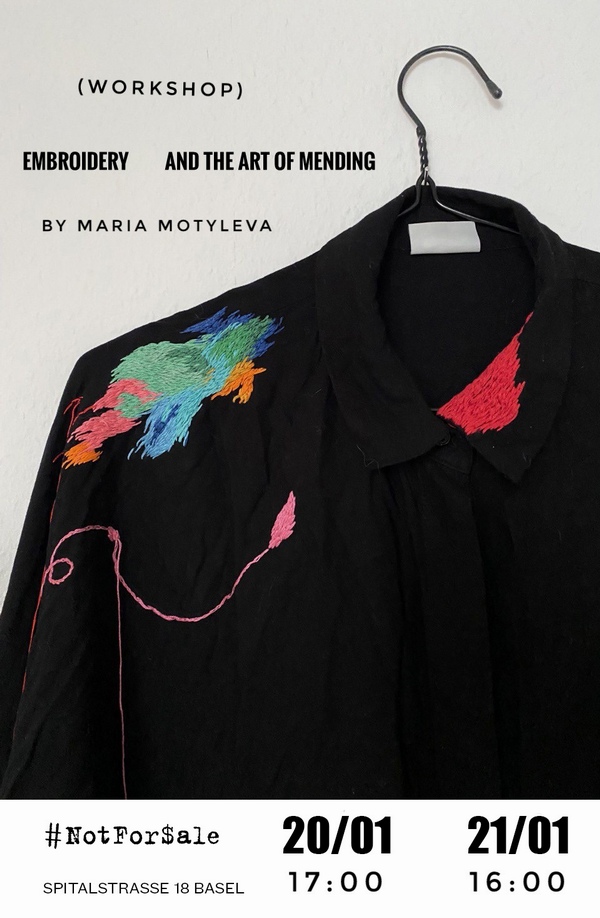 |
| |
an exhibition by Béla Pablo Janssen
opening 6pm, thursday 22th september 2022
|
|
Capturing the fleeting for a moment -
The art of Béla Pablo Janssen
Béla Pablo Janssen (BPJ) lets himself be driven by the substance of life - this substance is both creative drive and creative impulse for him. He surfs, scans his surroundings, captures impressions - his gaze attentive to the everyday as well as the extraordinary. His work is thus created in close connection with his own biography and against the background of a thoroughly relaxed artistic self-questioning. The artist, born in Cologne (Germany) in 1981, combs through his experiential worlds, which present themselves to him like a rich repository of memories and condensed experiences drawn from private and professional contexts.
BPJ is both the perceiving subject and the object of an examination that centers on his own perception. Attentive witness of his states of consciousness, he always strives to maintain the elasticity of mind and spirit through independence from temporal and spatial circumstances. Thus he pursues the expansion of his own intellectual and sensual horizon through the self-imposed mobility of an almost nomadic existence and the frequent changes of place associated with it. Like the traveler or even the drifter, he is deeply involved in the exchange with a constantly changing outside environment. He carefully registers casual observations as well as lasting occurrences, experiences both superficial encounters and emotionally intense relationships. The impressions he tracks down are excerpts from life flowing into an "anarchive," an inventory of (random) visual and textual material that BPJ has accumulated over many years, including faded family photos, posters, overexposed slides, publications, quotes, mementos, personal notes, snapshots. Also items taken from public urban space - torn off scraps of posters and graffiti tags - form part of the collection of motifs that BPJ then, in a process of creative recycling, condenses pictorially and transfers into new, poetic contexts of meaning. Thus he himself calls the work that emerges from the "anarchive" a "docufiction". Simultaneously documentary and fictional, introspective and imaginative, it oscillates between the experienced and the invented.
Actor in his own life surroundings, BPJ exposes himself to permanent self-observation. This also includes the experimental, playful reflection of the role of the artist between self-stylization and search. BPJ shapes himself as the protagonist of a narrative, whereby his own name simultaneously serves him for self-assurance and alienation (in the sense of an estranging "I am an Other"). Making use of the concentrated suggestive power of his second first name, "Pablo," which is officially registered in his passport, BPJ lays a trail that leads directly toward the prominence of a famous artist persona while simultaneously distancing himself from this artificial Alter Ego. With the offensive use of "Béla Pablo", which appears auratically charged as a typographically striking label or logo on the exhibition posters, BPJ publicly presents his own brand. Whilst propagating his own work, he also coquettishly parodies artistic self-representation and marketing marked by egomania.
Standing at the center of BPJ's flexible artistic approach, then, is first of all the appropriation of found and existing events and items. BPJ absorbs what is offered, he draws, films, takes notes, records sounds. As in sampling, he utilizes the recorded fragments and excerpts, duplicates, arranges, compiles, composes. Just as he moves freely – a wanderer between the worlds of experience and image – and easily combines fact and fiction, BPJ glides smoothly between genres of photography, painting, drawing, and graphics. His works prove to be multi-media experimental arrangements, inherent with the airy openness of ephemeral phenomena. In the lightness of interpenetrating, shifting layers, notes and sketches overlap, translucent, palimpsest-like traces point in a symbolic way to former narrative connections of the involved paper scraps and image segments, but always stand for themselves as detached entities, like hints, echoes.
A deeply romantic vein, a yearning nature imbues the work of Béla Pablo Janssen. The series of "Sonnenzuwendungen" (Dedications to the sun), quiet, concentrated, observations of the delicate color gradients of the rising and setting sun, appear like meditative exercises. The conceptual repetition of the same motif results in melancholy atmospheric images, in which the subtle coloring of the atmosphere hints at the transience of the moment. In a series of coarse-grained nude images, the female figures appear like faint traces of a formerly personalized photograph. It seems that PBJ explores the development of an image in increasingly fleeting stages until reaching the point of vanishing through many reproductions and variations of an original by means of screen-printing technique and further treatment with spray paint and gouache. As in other works by BPJ, the recurring motif appears in its various states that emerge from conditions based on the material and medium deployed. Dissolved to mere hints and almost reduced to anonymity the displayed women are detached from their individual origin. Are they lovers or just stray images, taken from a magazine? Corresponding to the degree of personal attachment and detachment their images occupy a field of ambiguity between appearance and disappearance, presence and absence. This passing corresponds – in a thoroughly melancholic sense – to the existential en passant of the – experienced? – moment, the merely temporary presence of the – adored? – person depicted.
In addition to the principle of presence and absence, the compositions are determined by the interplay of emptiness and fullness, exterior and interior, foreground and background. Often an object-like structure is included within the overall arrangement. In these picture-within-a-picture constructions, a pictorial motif – sometimes representational – is surrounded by a wooden border that is set into the closed canvas surface as a structuring frame. It appears as a radical opening of the illusionistic painting plane, giving way to a collage form expanding in time and space. Through this special presentation - as if enclosed by a shrine - a banal thing, a ripped piece of a poster, is stripped of its everyday reality of commonly perceived worthlessness. Instead it occupies a fixed place in the pictorial space and appears, as it were, precious, even sublimated. Touched briefly and used selectively, it remains locked in time and space for a moment before undergoing another transformation in Béla Pablo Janssen´s subjective cosmos.
Bettina Haiss, Cologne 2022
|
|
|
during art basel / opening 15th june 2022
|
| |
| |
| |
| |
